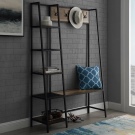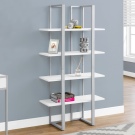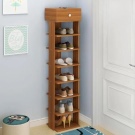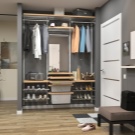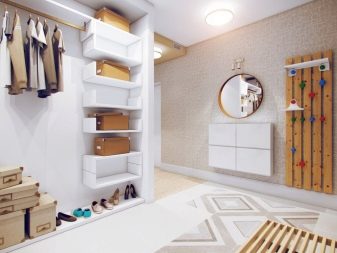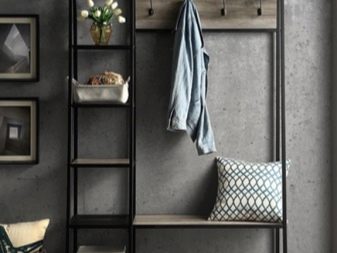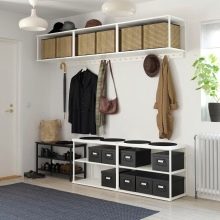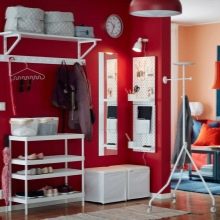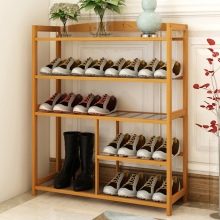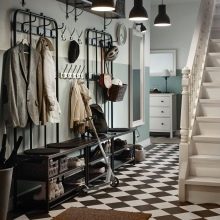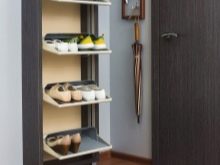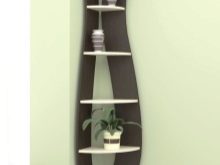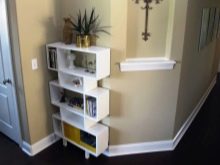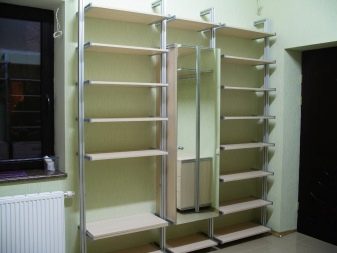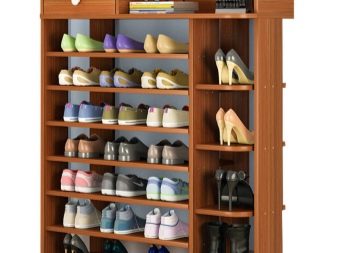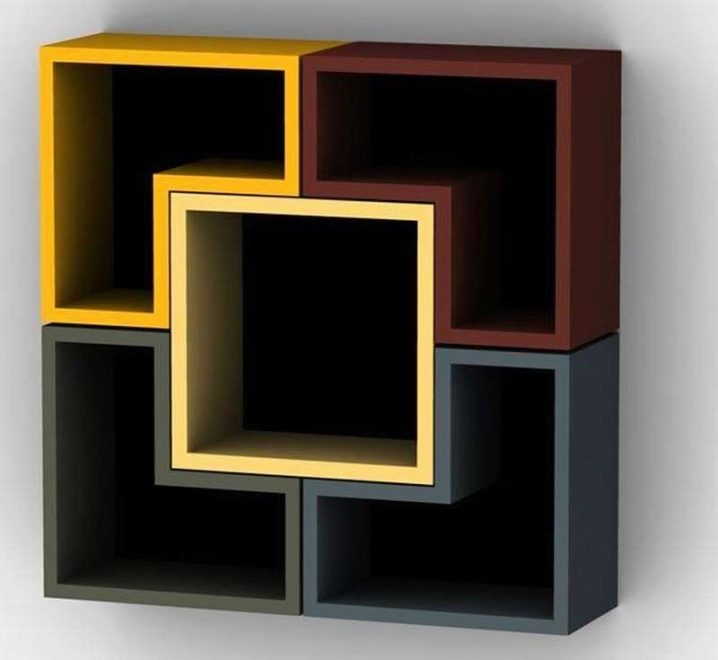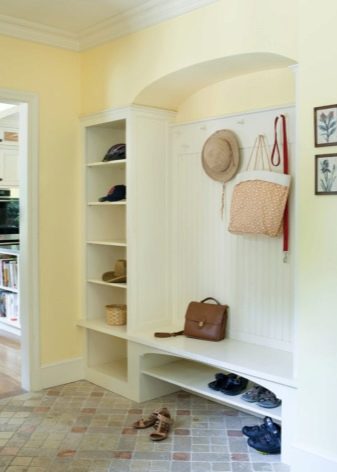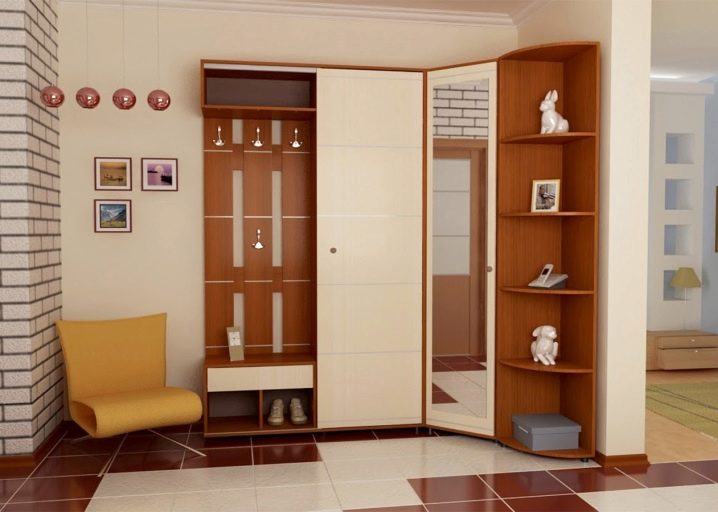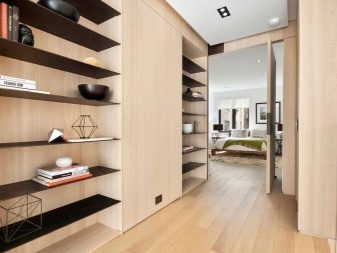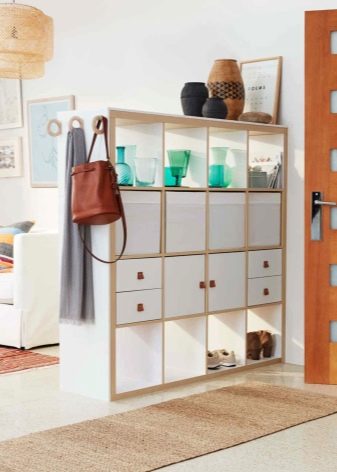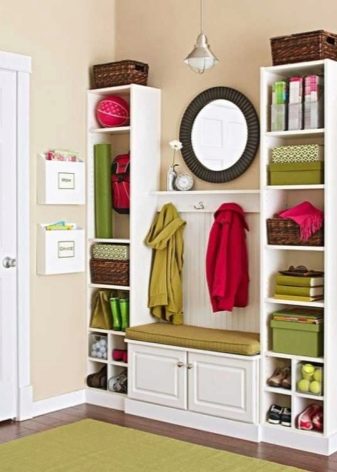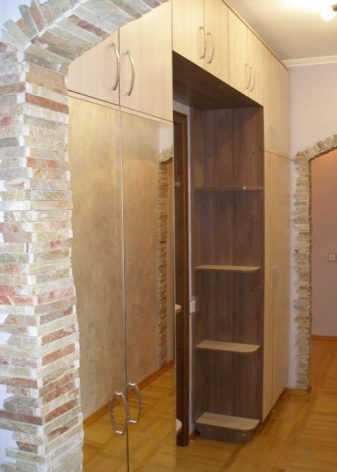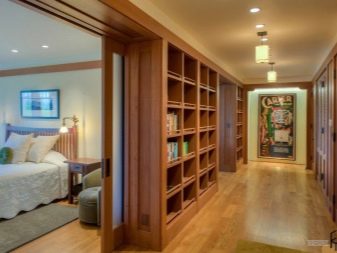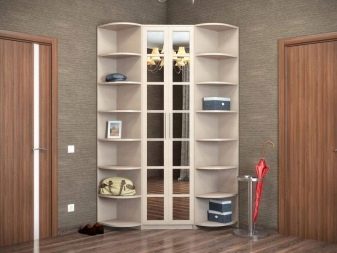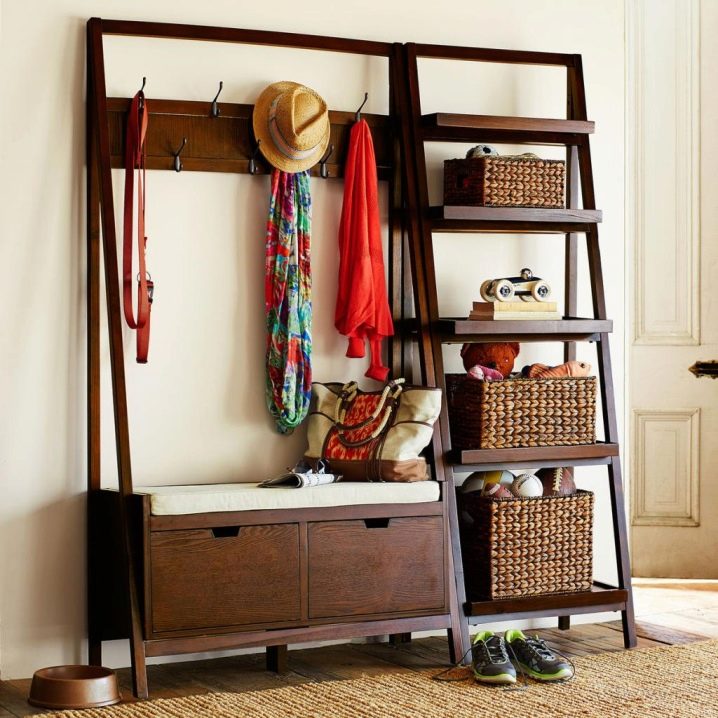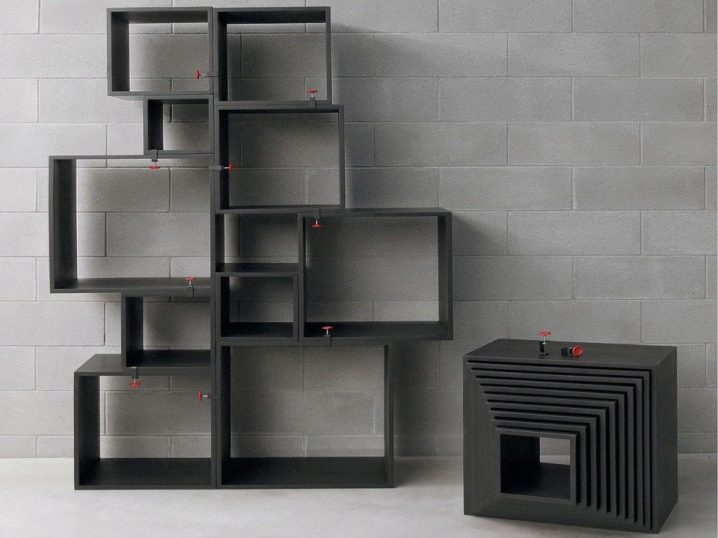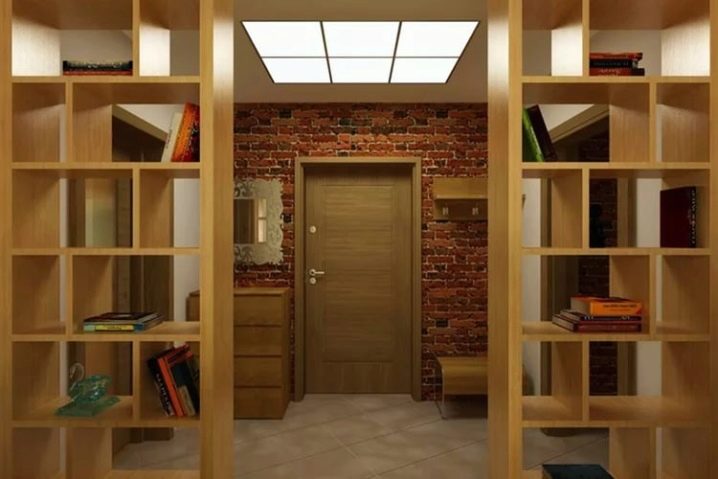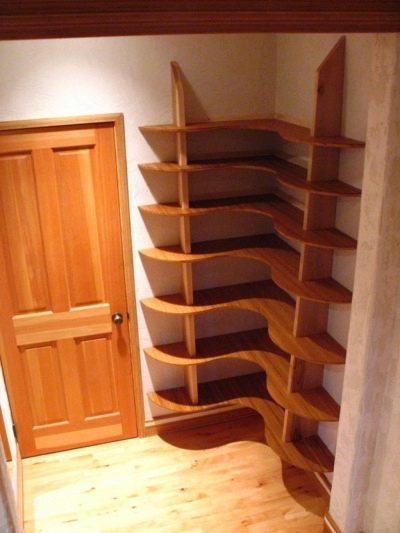How to choose a rack in the hallway?
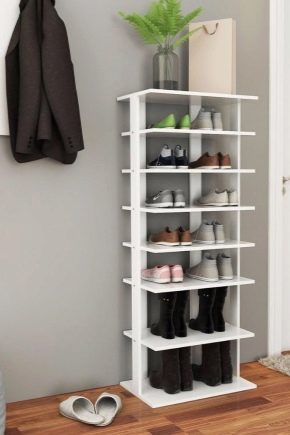
The name of the comfortable and popular furniture “shelving” comes from the Dutch word “stellage”, which means “to fold”. In the hallway there are many things and accessories that should be folded neatly - shoes, umbrellas, bags, gloves, scarves, hats. In a small room, lightweight open shelving does not overload the space and at the same time carry the maximum functional load. Thanks to them, every thing is in its place.
Advantages and disadvantages
The rack has sides and open shelves. If it is floor-to-ceiling sized, it is fixed to the wall for stability. Small mobile structures can be installed freely, if desired, they can be rearranged.
Shelves are ideal for miniature hallways, where blind cabinets cannot fit, and things need to be laid out somewhere. In large halls, elegant open products go well with walls, wardrobes, dressers and any other massive furniture.
The racks are universal, as they are suitable for any room and can contain things of different directions.
These constructs have other advantages as well:
- light weight and easy assembly allow you to carry out the installation yourself;
- unlike closed cabinet furniture, the rack is compact and saves space;
- he well organizes things that are easily accessible, always in sight;
- a variety of models makes it possible to choose a product for any interior;
- racks can have different purposes (for shoes, accessories, decor), which allows you to install several multipurpose models in one hallway.
As for the disadvantages, they are also available:
- dust accumulates on open shelves, and the more items are on the rack, the more difficult it is to clean it;
- shelves, accessible to the eye, oblige to maintain perfect order, any carelessly thrown thing immediately becomes noticeable;
- new shoes look good on open shelves, worn boots and shoes create a dull look and do not reflect in the best way on the atmosphere in the hallway.
What are they?
Shelves have a large number of types, so it is difficult to classify them. There are 4 main groups:
- frame;
- modular;
- built-in;
- included in the furniture wall.
In any of these groups, racks can be straight, corner, back-to-wall, hanging, zoning. In addition, the designs differ in purpose - shoe racks, for decor, accessories. According to the size of the model, they are produced narrow, wide, high, low - for any parameters of the hallway.
Wireframe
They represent a single structure, that is, shelves installed on a frame base of any size. The product can have a back wall and closed sides, or it can be completely open. This is what a sidewall shoe frame looks like.
Modular
The rack is made up of different sections. Convenient in that you can change the position of the modules and update the decor in the hallway. In small corridors, the structure can be easily divided into parts and installed where there is a place.
For example, a set of modular shelves can be used together or separately.
Built-in
Shelves are built into niches, into walls, into plasterboard partitions. Most often they take up space from floor to ceiling. They are mounted in two ways.
- The shelves are fixed directly to the walls using corners.
- They make a base (back wall, sidewalls) on which the shelves are attached.This option "eats up" part of the space, but to some extent protects things from dust.
Built-in racks are not bought in furniture stores, they are made independently or to order. The value of such structures is that they choose the most suitable place in a particular hallway and, when designing, take into account every centimeter of free space.
Examples of inline constructs:
- shelving with sidewalls built into the wall;
- built-in rustic furniture.
Shelving in furniture walls
The walls in the hallway consist of closed cabinets and pedestals, often they include a mirror or a section with an open hanger. For shelving in this design, a side place is allocated, where the shelves are installed straight or at an angle. For example, you can arrange a corner shelving unit in a furniture wall.
Nuances of choice
Choosing a rack in the corridor, first of all, take into account the parameters of the room. If there is a place for it, the correct measurements should be taken before buying. Remember, small rooms need sleek designs that can work in a light or even white color. Large hallways do not need to limit the size, quantity and color of furniture.
In addition to dimensions, it is important to know the purpose of the rack - for things, for shoes, for jewelry. Targeting affects the design features of the model.
When purchasing a rack in a ready-made hallway setting, it is necessary to take into account the existing style. For example, metal products will suit modern interiors in loft and high-tech style. Glass shelves will decorate the hallways in the fusion style, minimalism. Wooden models are universal, they will suit any design.
It is better to buy a ready-made rack in well-known companies, so as not to doubt its quality.
Accommodation features
When arranging furniture in the corridor, the following rules must be taken into account:
- it should not interfere with movement around the room;
- at the front door, there must be a spacious place where you can change your shoes, take off your outerwear;
- wherever the shelving stands, the door should open freely.
Shelves with shoes are placed near the entrance so as not to carry dirt inside the hallway. Exhibition furniture for decor is installed closer to the interior doorways.
Standard racks with a shelf depth of 20 or 30 cm are usually purchased in the corridor. In compact rooms, you can use narrow products by placing them, for example, on both sides of the arch leading to the living room.
It is practical to take inactive corners with furniture by placing shelves on two adjacent walls at once. Corner structures can also be included in the factory wall kit.
Wide models should be left in spacious halls. Even if they are placed in a small hallway and occupy the entire wall, the impression of such a design will be overwhelming, even open shelves will not save.
Examples in the interior
The shelves in the corridor are functional and beautiful, they are able to accommodate a large number of things and affect the appearance of the entire room. We offer a selection of photos of open structures in the interiors of hallways:
- open metal model looks elegant, despite its size;
- inclined shelving in the form of a ladder - light and original;
- an unusual set of shelves - you can assemble a structure for every taste from modules;
- zoning furniture in the hallway with through shelves;
- built-in corner product for shoes;
- non-standard arrangement of shelves on a rack with one rack;
- hanging corner structure for a cramped hallway;
- extraordinary shoe rack;
- a practical design at the entrance contains everything you need - open shelves, hangers, a mirror and a cabinet with a seat;
- rack with shelves and drawer for short shoes.
The rack in the hallway looks business-like, practical and at the same time creates coziness. In any case, the corridor only benefits from his presence.

